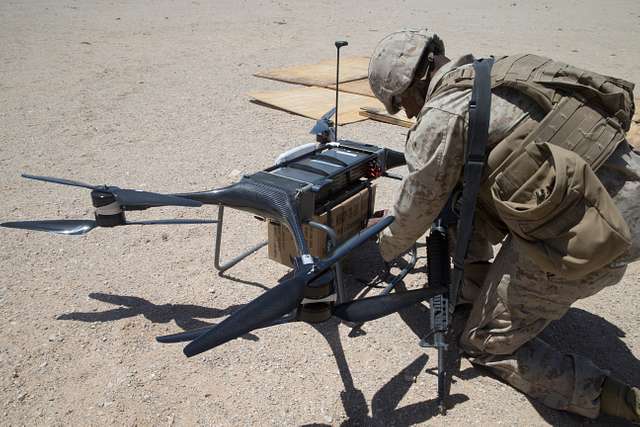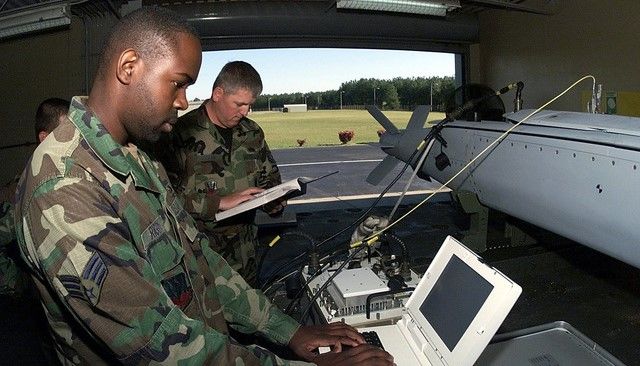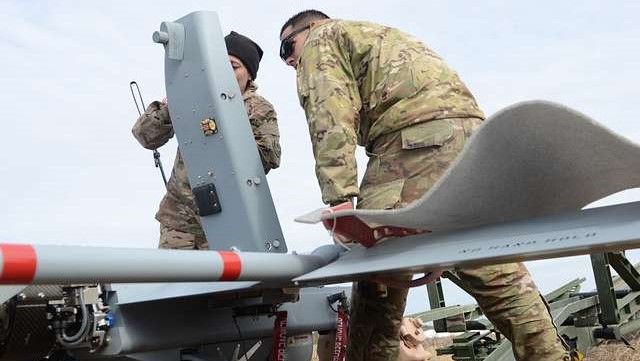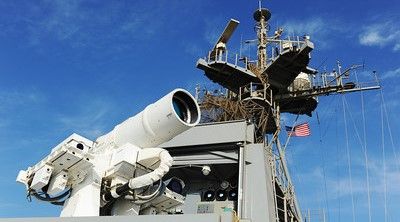US Military Outlines Anti-Drone Development Plan
Pentagon releases pathway for the research, procurement, and training each service needs to combat the prolific rise of UAVs.

When you have a combined military budget of more than $800 billion and an armed force that operates on every almost every continent and in almost all environments, then incorporating a new concept of military hardware that suits all purposes is extreme and complex.
This is the challenge facing the Pentagon as it attempts to plan a future for the development, production, training, and deployment of drones for the combined forces of the Navy, Army, Air Force, and US Marine Corps.

For this reason, the US Military established the Joint Counter-small Unmanned Aircraft Systems Office, or JCO to “coordinate counter-UAS development, doctrine, organization, and training across the force,” reports the industry journal C4isrnet. It is a command centre “aimed at [the] various capabilities to tackle the complex and varying drone threats observed on the battlefield from cheap, hand-held devices to low-collateral interceptors to high-powered microwave capabilities.”
Central to this process is the testing of numerous drone designs and counter-drone concepts, sourced from various manufacturers and defence contractors which JCO then evaluates.
The assessment is based on a variety of criteria, such as price, timescale to deployment, and effectiveness. From there it selects a list of vendors which it passes on to the Air Force along with funding so that evaluations can be continued over further demonstrations.

A final fly-off is then scheduled (the next one is due in late winter/early spring 2024), after which each service will have the option to select the capabilities that meet service-specific needs from the list of suggested providers.
Additionally, once the demonstrations have reached a safety level suitable for use by troops, the JCO sends the systems on to combatant commands.
“Every service has a low-collateral capability inside every COCOM [combat command] right now testing and providing that feedback to the Air Force,” explains Maj. Gen. Sean Gainey, the JCO office director.
It is a strategy which enables each force to deploy drone hardware without waiting for everything to be perfected. It also allows input from troops to be sent back to development teams for a revolving upgrade process that is able to adapt to new threats, different enemy tactics, and the latest drone designs.
The JCO has already used a similar development process to speed up the transition of laser weapons from laboratory design into hardware that can be built, bought, and deployed in the field for ‘real-world’ assessment and ongoing improvement.
Doing so has facilitated the office in funding the Air Force and Army in establishing directed energy weapons into operational theatres, expanding the designs available from 10-kilowatts, 20-kilowatts, and eventually 50-kilowatts.

However, the role of the JCO is in turn being assessed and modified, with a recent Centre for Strategic and International Studies (CSIS) report being sent to Congress and Defense Department officials recommending that “[leadership] consider modifications to JCO’s authorities and relation to service acquisition agencies to improve the requirements process and acquisition timelines.”
Not since the creation of the tank has new military hardware influenced how war is fought more than the drone is changing the modern battlefield. In the Russian/Ukraine war, drones are destroying trench systems, directing artillery fire, sinking ships, providing infantry with fire support, and setting tanks ablaze.
To counter this powerful new weapon, both sides are having to rapidly create counter-drone technology and tactics with weapons development teams are pushing the limits of innovation.
As a leader in military funding and research, nowhere is this more watched than the US military. With the Pentagon now laying out its own strategy for speeding up the process of concept to blueprint to prototype to field testing, as well as the flow of feedback from soldier to design team, it surely will not be long until both drone and anti-drone capabilities reach new heights.
Photo credit: Flikr, Jenikirbyhistory, Nara, & Nara

